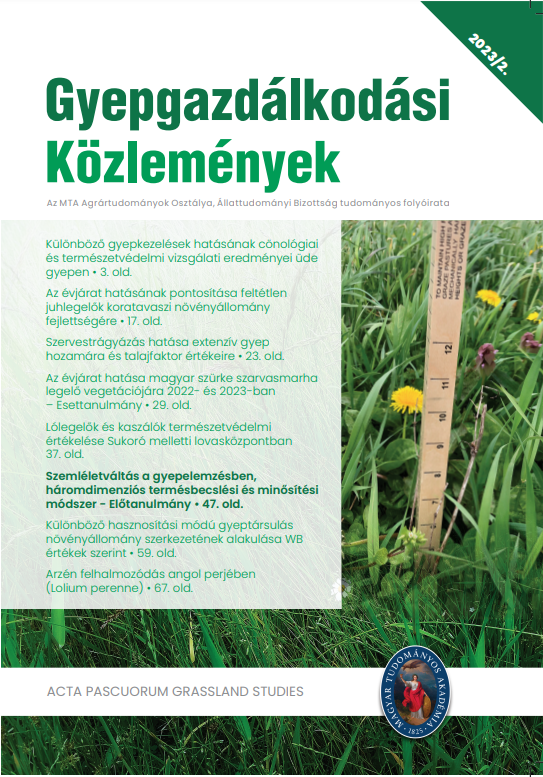Conservation survey of horse pastures and hayfields in an equestrian centre near Sukoro
Authors
View
Keywords
License
Copyright (c) 2024 Grassland Studies

This work is licensed under a Creative Commons Attribution-NonCommercial-NoDerivatives 4.0 International License.
How To Cite
Abstract
The test was carried out in Sukoró, on the lawns of the Sukoró Equestrian Center in May 2023. The purpose of the survey was to present the natural state and economic value of grasslands with different uses. The ceenological surveys were carried out using the Braun-Blanquet method, during which we recorded the data using 2x2 meter squares and gave the cover values in %. The squares were placed randomly in the given areas. During the survey, we analyzed five sample areas in three units. Our sample area I. is degraded fresh grassland, which was a horse pasture that was overgrazed in 2023, II. the sample area was a meadow dominated by sedge, which is utilized by mowing. The III. the sample area is Siki lawn dominated by Festuca pseudovina, which was also mowed. The IV. the deepest part of the mowing area, marsh meadow-fen, which is also used as a mowing area. Sample area V is silicate rock grassland, which is also grazed by horses, but was left alone in 2023.
With the exception of sample area I, which was intensively grazed in 2023, and therefore overgrazed by trampling, based on the tests, the natural state of the lawns remained valuable even after treatments, mowing and grazing. In the lawns, the largest proportion of elements of the native flora can be found. In the deeper spot on the mowing field, bog elements and the protected species Anacampts pyramidalis also appeared. A protected species, Allium sphaerocephalon, also occurred in the silicate rock lawn. The lawn management methods carried out by the riding center are suitable for maintaining the area's vegetation in a close-to-nature and long-term manner.

 https://doi.org/10.55725/gygk/2023/21/2/13497
https://doi.org/10.55725/gygk/2023/21/2/13497